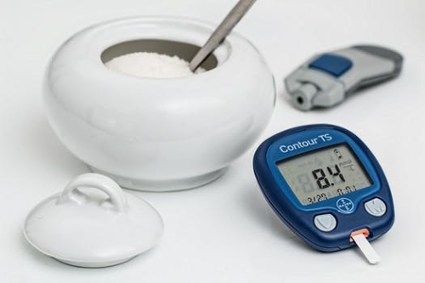I was recently at home with my dad when he admitted to being recently diagnosed with prediabetes. I was originally under the impression that it was the same thing as diabetes but he made it clear that it’s different. Neither my mom or I were surprised, because he hasn’t had the best eating habits in at least a few years. Making matters worse is the fact that he hasn’t been very active since he suffered a lower-back injury a couple years ago. My mom has been trying her best to motivate him, but he’s been impossible to convince. We hope the diagnosis is enough to change his mind, but there’s really no way to be sure. That’s why I’m trying to find a way to help. A lot of what I read online is about lifestyle choices. What’re some suggestions that might force him to get active again?
You might be surprised to learn that experts at the Centers for Disease Control and Prevention (CDC) estimate that approximately 84 million Americans have prediabetes. Those numbers are staggering. Worse still is the fact that 90% of those individuals are completely unaware of their diagnosis. Your dad was, up until recently, reflective of that figure. Fortunately, now that he’s privy to the risk and circumstances, he can take proactive steps to avert a future health crisis.
The unfortunate part is that changing unhealthy behavior is no easy feat. Researchers at Harvard explain exactly why it’s so hard and why it’s important that we keep trying. The psychology of human behavior is fascinating, if not sometimes frustrating. Experts have formed a near consensus around how bad habits are created and maintained (the “habit loop”), which is broken into three main components: (1) the trigger or “cue,” (2) the routine behavior, and (3) the reward. It’s the final reward stage that invariably produces a personal cue, which then recalls the preceding behavior automatically.
That’s why people can so easily fall prey to bad habits. The very nature of the habit is that it requires to deliberate thought to execute the associated behavior. Don’t be deceived, however, because change is still more than possible. Consider sharing these seven ways to jumpstart healthy change if your life. The list is both practical and genuinely intuitive, especially for someone sufficiently motivated. There’s also no shortage of beginner’s guides to getting healthy and fit. The options are almost endless.
It’s possible that his motivation might wane as he progresses. Discouragement builds faster than you might expect. Because of that, you might propose joint activities that emphasize mutual accountability. One possibility is a membership to a health and fitness center. Another less conventional option is taking joint classes at a local dance studio, which has the appeal of a unique father-daughter experience.
Remember that the type of activity is almost irrelevant. What’s most critical is regular cardiovascular activity. Everyone responds differently to a prediabetes diagnosis and the proposed treatments made thereafter. Personalization is key. Explore as many options as necessary until you discover one that naturally appeals to your dad.
“We are what we repeatedly do. Excellence, then, is not an act, but a habit.” — Aristotle


